Abstract
We compared 49 homeless female-headed families with 81 housed female-headed families in Boston. Most housed families were living in public or private subsidized housing. In both groups the mothers were poor, currently single, had little work experience, and had been on welfare for long periods. Many of their children had serious developmental and emotional problems. Homeless mothers had more frequently been abused as children and battered as adults and their support networks were fragmented; the housed mothers had female relatives and extended family living nearby whom they saw often. The frequency of drug, alcohol, and serious psychiatric problems was greater among the homeless mothers. The homeless mothers may have been more vulnerable to the current housing shortage because they lacked support in time of need. This, in turn, may have been due to their history of family violence. Psychiatric disabilities may have been another contributing factor in the minority of homeless women. The notion that a "culture of poverty" accounts for homelessness was not supported by the data since the homeless were less likely to have grown up in families on welfare. The data suggest that solutions to family homelessness in the current housing market require an increase in the supply of decent affordable housing, income maintenance, and assistance from social welfare agencies focused on rebuilding supportive relationships.
Full text
PDF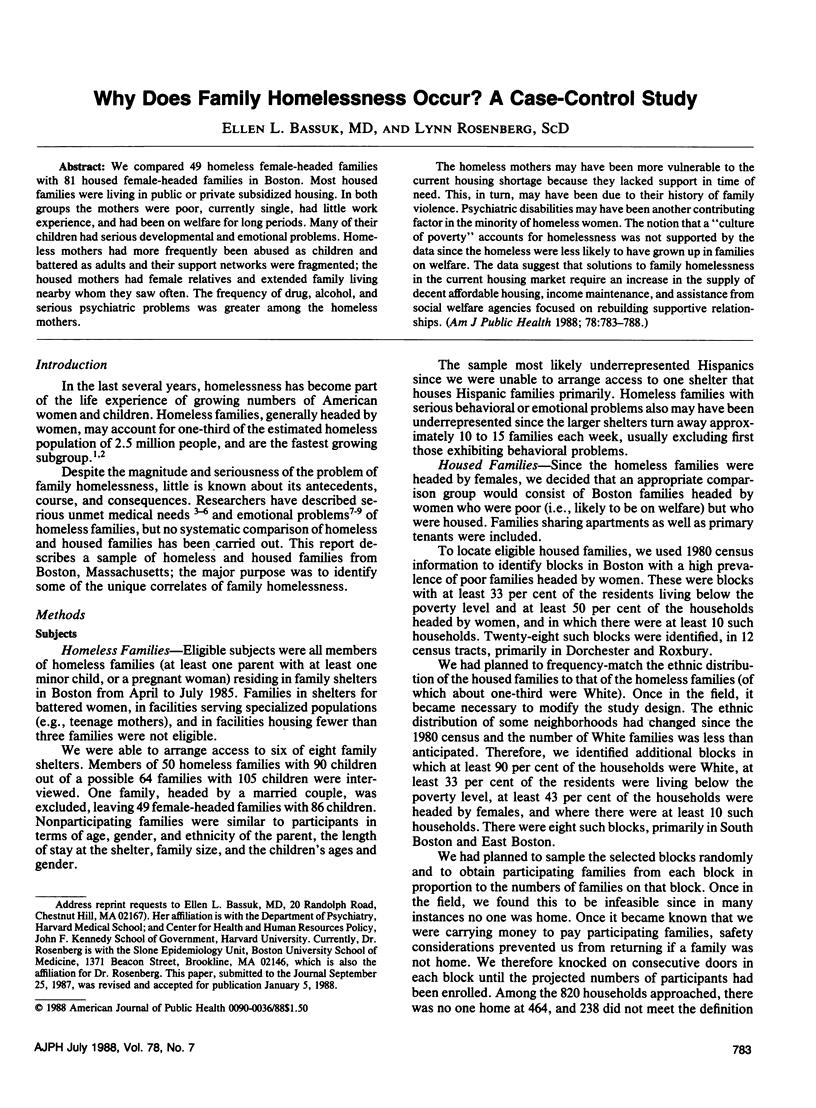
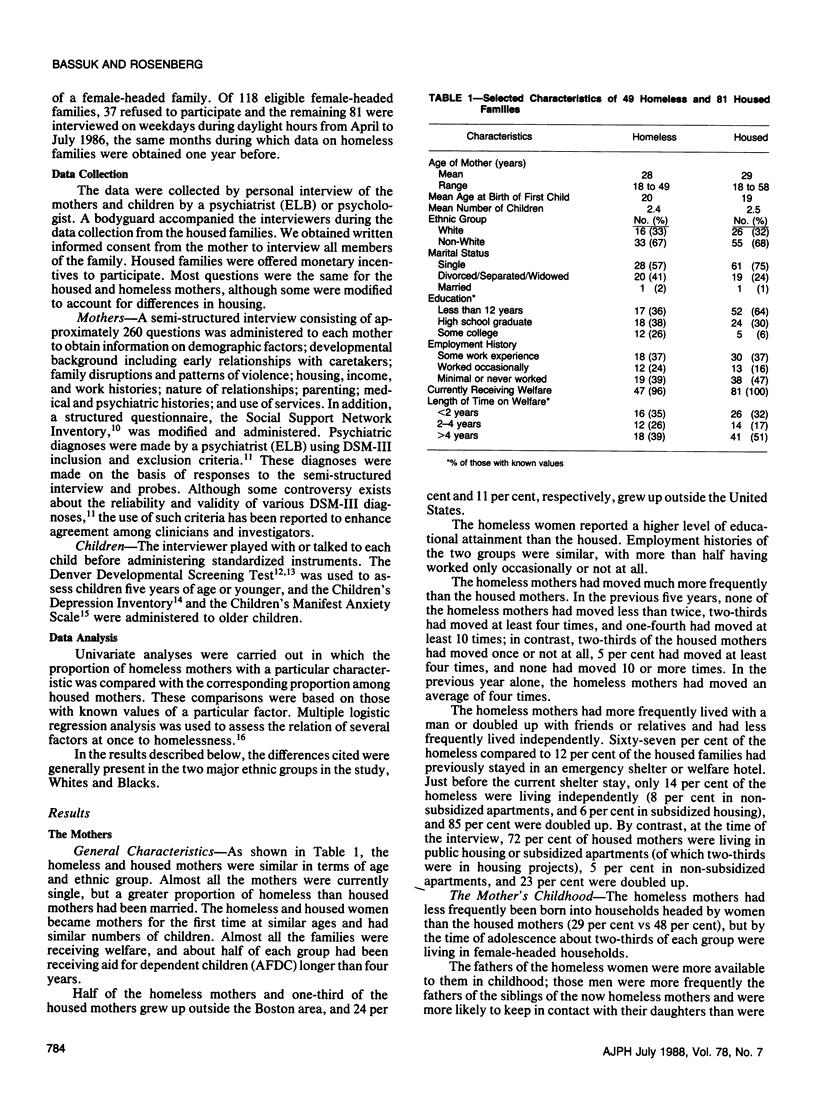
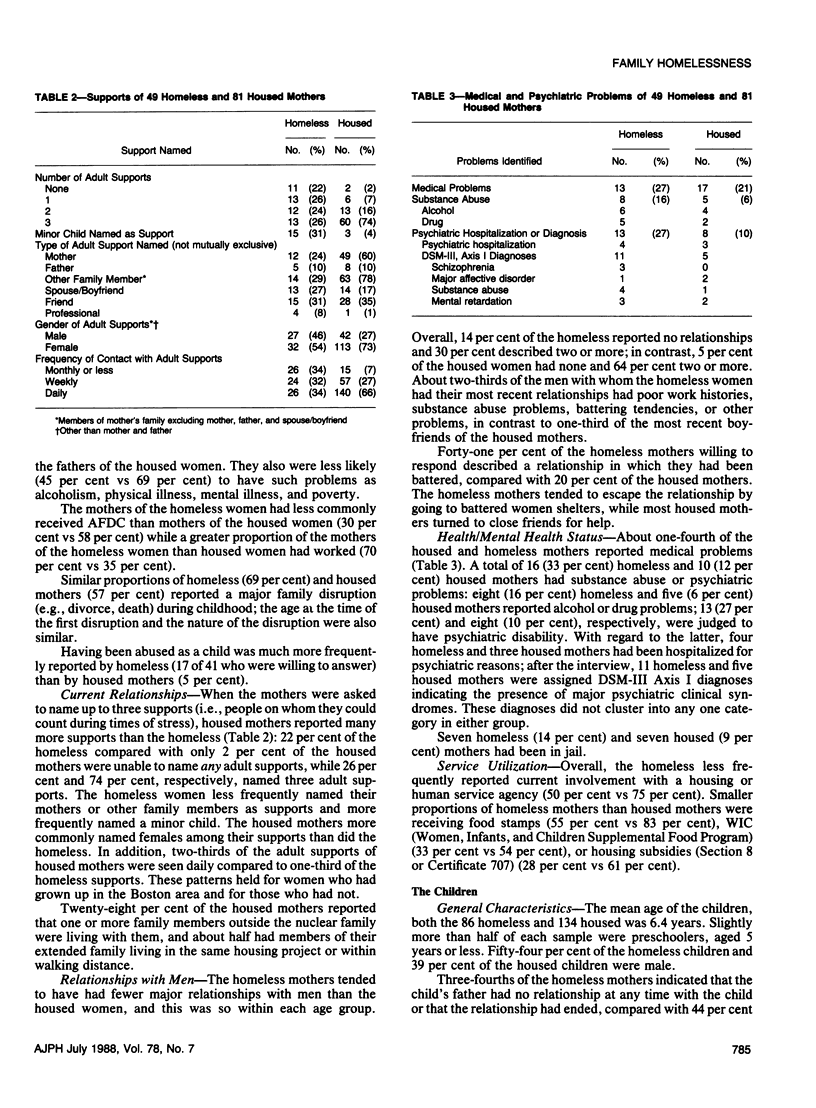
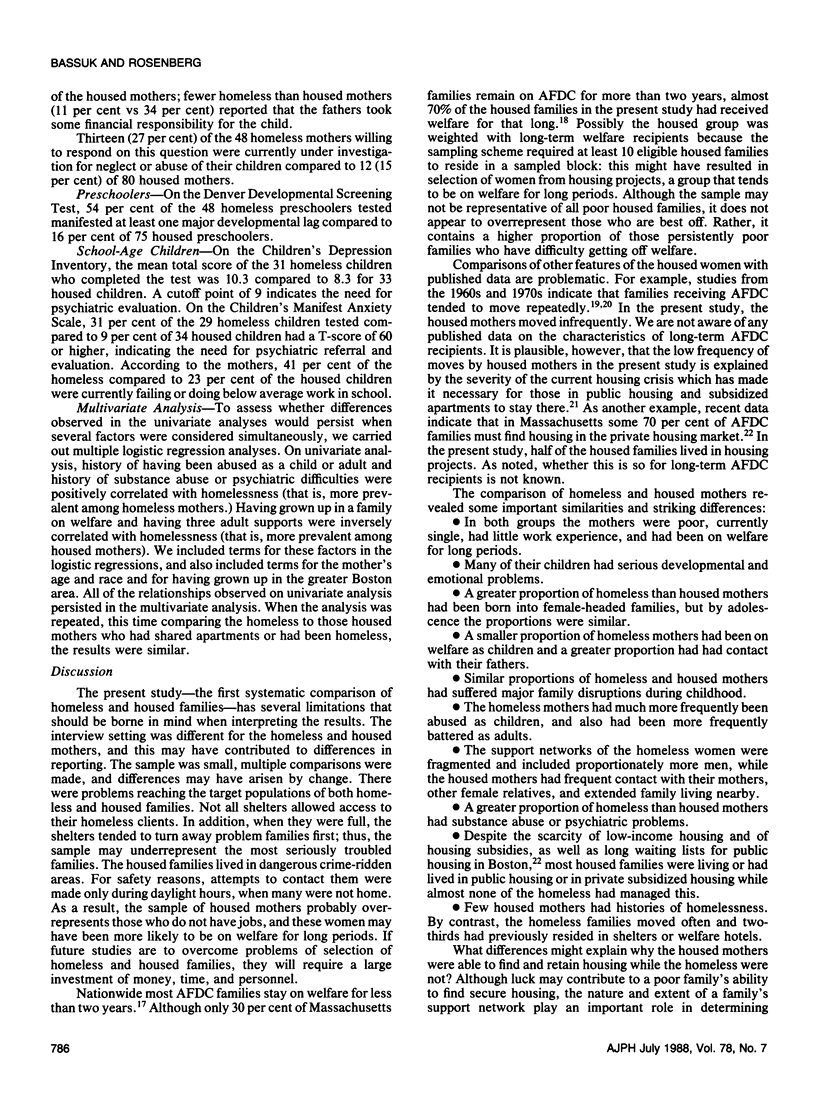
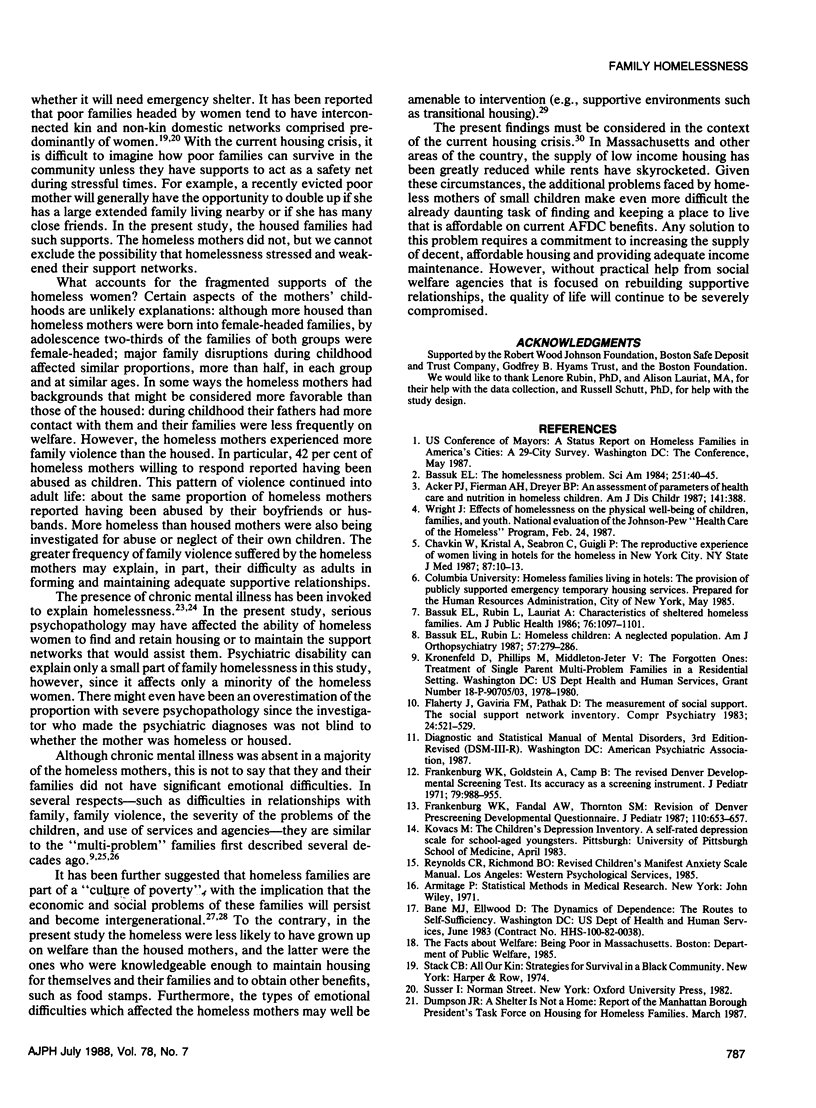
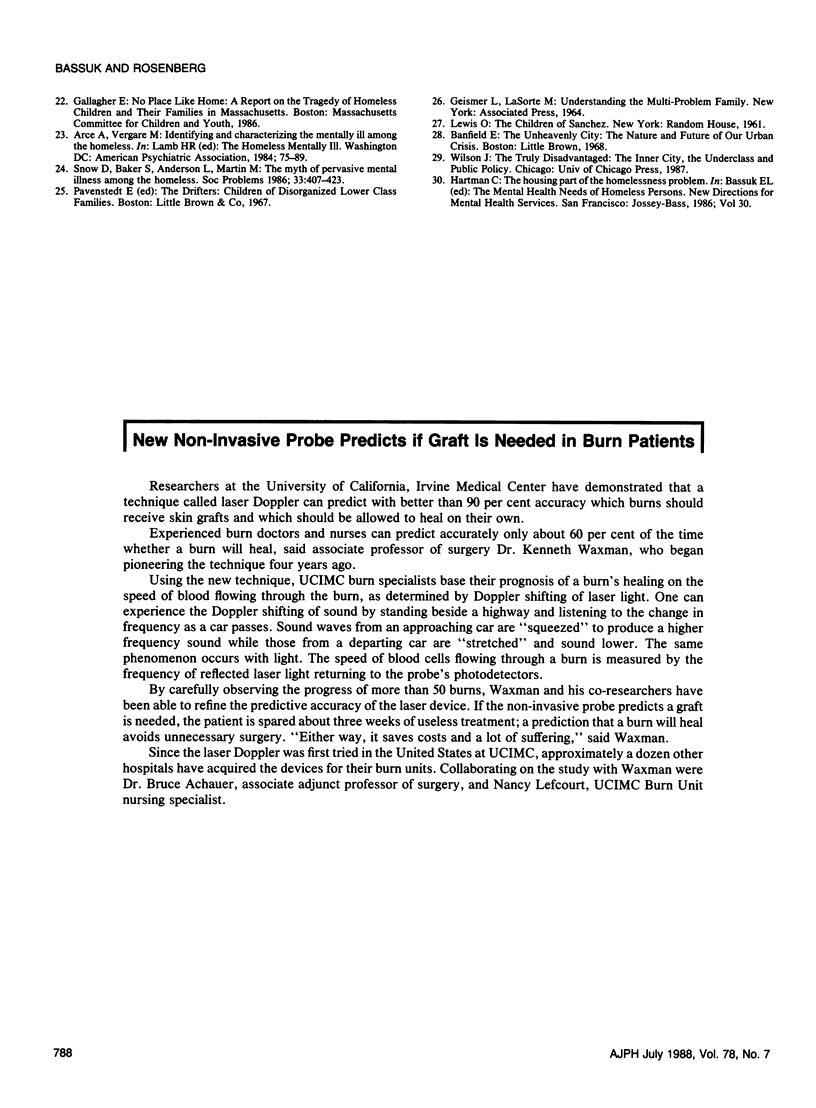
Selected References
These references are in PubMed. This may not be the complete list of references from this article.
- Bassuk E. L., Rubin L., Lauriat A. S. Characteristics of sheltered homeless families. Am J Public Health. 1986 Sep;76(9):1097–1101. doi: 10.2105/ajph.76.9.1097. [DOI] [PMC free article] [PubMed] [Google Scholar]
- Bassuk E., Rubin L. Homeless children: a neglected population. Am J Orthopsychiatry. 1987 Apr;57(2):279–286. doi: 10.1111/j.1939-0025.1987.tb03538.x. [DOI] [PubMed] [Google Scholar]
- Chavkin W., Kristal A., Seabron C., Guigli P. E. The reproductive experience of women living in hotels for the homeless in New York City. N Y State J Med. 1987 Jan;87(1):10–13. [PubMed] [Google Scholar]
- Flaherty J. A., Gaviria F. M., Pathak D. S. The measurement of social support: the Social Support Network Inventory. Compr Psychiatry. 1983 Nov-Dec;24(6):521–529. doi: 10.1016/0010-440x(83)90019-6. [DOI] [PubMed] [Google Scholar]
- Frankenburg W. K., Fandal A. W., Thornton S. M. Revision of Denver Prescreening Developmental Questionnaire. J Pediatr. 1987 Apr;110(4):653–657. doi: 10.1016/s0022-3476(87)80573-5. [DOI] [PubMed] [Google Scholar]
- Frankenburg W. K., Goldstein A. D., Camp B. W. The revised Denver Developmental Screening Test: its accuracy as a screening instrument. J Pediatr. 1971 Dec;79(6):988–995. doi: 10.1016/s0022-3476(71)80195-6. [DOI] [PubMed] [Google Scholar]


